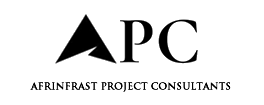
Sustainable lighting solutions have become a cornerstone of the evolving certification of both new builds and renovations- and Maytoni is here to help
The global sense of urgency around sustainable development has significantly influenced the construction and design industries, with greener building standards and more eco-conscious architecture gradually becoming a cornerstone of the evolving certification of both new builds and renovations.
And lighting is a key player in this turning tide, occupying a pivotal role in European construction certifications like BREEAM, LEED, and DGNB – benchmarks in the industry.
At Maytoni, we’re committed to sustainable lighting in its broadest sense. Not just solutions that generate minimal environmental impact through energy efficiency and material recyclability, but that also create enduringly liveable, aesthetically pleasing spaces – inside and out.
In fact, we’ve said publicly that the future of lighting is sustainability, and since nothing drives adoption in the construction industry like certification, we’re 100% behind it, and supporting it in our own way, as we explore below.
Understanding green building certifications in Europe
To see where lighting plays its part in current and future sustainability efforts, it’s helpful to understand what the various green building standards in Europe actually certificate, and how they support each other.
Green building certifications, in general, assess a building’s environmental performance across various metrics, including energy efficiency, water usage, indoor air quality, material selection, and overall sustainability.
Some of the most prominent certifications in Europe are the three we mention above, and here’s how they come together:
- BREEAM (Building Research Establishment Environmental Assessment Method): A widely recognised standard that evaluates buildings for energy efficiency, material usage, and sustainability.
- LEED (Leadership in Energy and Environmental Design): Originating in the U.S., LEED has gained traction in Europe for its comprehensive evaluation of green building practices, including lighting design.
- DGNB (Deutsche Gesellschaft für Nachhaltiges Bauen): The German Sustainable Building Council’s certification focuses on holistic sustainability, including economic and sociocultural factors, alongside environmental metrics.
Whilst some of these are very specific criteria and some are much broader, lighting design directly influences many of them.
Lighting at the heart of green building standards
Lighting plays a role in several key aspects of green building certifications, from energy consumption to occupant well-being. Here are some critical ways lighting contributes to greener construction standards:
Energy efficiency
Efficient lighting systems significantly reduce energy consumption, a core metric in any green building certification. LED lighting, for example, consumes up to 75% less energy compared to traditional incandescent bulbs.
By combining them with motion sensors, daylight harvesting, and dimming technologies, designers, architects, and builders can optimise energy usage, earning higher scores in certifications like BREEAM and LEED.
Use of sustainable materials
Certifications such as DGNB reward the use of sustainable, recyclable, and non-toxic materials in building components, including lighting fixtures.
At Maytoni, we prioritise sustainable and recyclable materials in our products, ensuring they align with green building standards and contribute to circular economy principles.
Reduction of light pollution
Minimising light pollution is a key consideration for certifications like BREEAM. Outdoor and landscape lighting should be designed to reduce glare, and to direct light only where it is needed. Outdoor lighting solutions from Maytoni have been recognised by DarkSky International both within and outside Europe for their ability to limit light pollution while maintaining functional and aesthetic appeal.
Enhancing indoor environmental quality (IEQ)
Indoor environmental quality is a significant component of certifications such as LEED and DGNB. Compliant lighting design enhances occupant comfort, productivity, and well-being.
Features like high-quality drivers that minimise flicker, tunable white lighting to complement circadian rhythms, and glare-free illumination all contribute to creating healthier indoor environments. (For some tips on how lighting can also help relieve Seasonal Affective Disorder (SAD), read our recent article).
Integration with smart building technologies
Smart lighting systems enable buildings to monitor and control energy usage more effectively, aligning with the smart and sustainable building criteria of many certifications.
At Maytoni, our lighting solutions can integrate with IoT via Google Home, Alexa Echo, and voice, to support energy optimisation and enhance user control.
Real-world outcomes
Across Europe, buildings that incorporate sustainable lighting solutions are achieving higher certification levels and setting new benchmarks for green architecture.
For example, advanced LED lighting systems have helped numerous office buildings achieve BREEAM Excellent ratings, including the Lysgården Office Building in Trondheim, Norway, the La Samaritaine Department Store in Paris, France, and LOOM Glòries Coworking in Barcelona, Spain. Some examples of Outstanding-rated office buildings are also starting to emerge.
Likewise, smart lighting systems integrated into homes have contributed to LEED-certified residential projects, enhancing both energy efficiency and occupant comfort. As a whole, including both residential and commercial buildings, European LEED certifications are highest in France, Germany, Italy, Poland, and the UK.
Illuminating the way ahead
As the demand for green buildings grows, lighting will continue to be a crucial factor in achieving certification goals. By investing in energy-efficient, sustainable, and smart lighting solutions, stakeholders can create spaces that are not only beautiful but also environmentally responsible.
At Maytoni, we are proud to support this vision by delivering timeless, elegantly designed lighting solutions that incorporate, celebrate, and support the highest standards of sustainability and design excellence.

The post Buildings get the green light! Sustainable lighting certification in European construction and beyond appeared first on Planning, Building & Construction Today.

